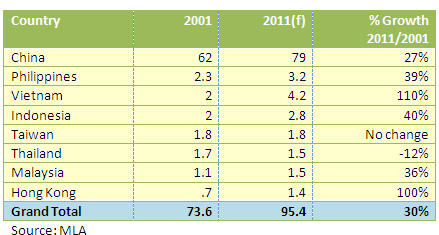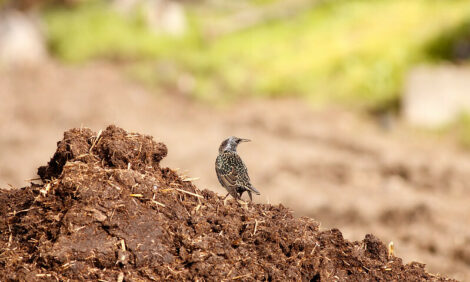



Asian Meat Consumption Performing Strongly
ANALYSIS - Animal protein has become increasingly important in Asian diets over the past decade, according to Peter Duggan from the Strategic Information Services of Bord Bia-Irish Food Board.This surge in demand is being helped by strong GDP growth, increasing tourism and existing retailers gradually shifting their focus to secondary and tertiary towns and cities.
However, while there appears to be a surge in meat consumption in the Asian countries, they still lag some distance behind the more developed countries with the greatest density of consumption in the US and Australia. The big meat producing countries of South America and Europe also have high meat consumption per head of population, writes ThePoultrySite Editor in Chief, Chris Harris.
According to Dr Henning Steinfeld from the Food and Agriculture Organisation of the UN, by 2050 the world will need 50 per cent more food and between 70 and 80 per cent more meat to feed a population that is expected to grow by 30 per cent.
Pork and poultry consumption accounts for the vast proportion of animal protein in a typical Asian diet, and this is down to the fact that these meats are produced more quickly and less expensively than beef.
The recent World Agricultural Supply and Demand Estimates gave some cheer to beef producers as it predicted that while beef and broiler production forecasts for 2011 have been lowered and pork and turkey production increased, beef export forecasts for 2011 and 2012 are raised slightly as strong global beef demand supports continued gains in US exports to a number of Asian markets.
But in the long term, global meat consumption is expected to grow by 40 million tonnes in the decade from 2010 to 2020.
In China alone, pork consumption equates to over half of total meat consumption of SE Asian countries that also include the Philippines, Viet Nam, Indonesia, Taiwan, Thailand, Malaysia and Hong Kong.
Consumption now stands at 38kg per head, an increase of 19 per cent on 2001 levels. Asian meat consumption for the SE Asia countries and China is expected to show a 30 per cent increase on 2001 levels.
At the recent World Pork Conference in Germany, Richard Brown from market analysts Gira said that a third of the growth in meat consumption, which will favour cheaper meat cuts and products at present because of the global economic situation, will come in China and 60 per cent of that growth will be in poultry meat. Peter Duggan says that there are some promising trends that have appeared for beef consumption in countries like Viet Nam, Hong Kong and Malaysia according to a recent report by Meat and Livestock Australia.
The strongest growth has been evident in Viet Nam, where consumption over the last six years has risen by 114 per cent to 541,000 tonnes.
Some further strengthening in Vietnamese consumption looks likely as beef import tariffs are set to fall over the coming years.
Strong demand is also evident on the Hong Kong market, but some doubts surround these figures due to an unknown volume of meat imports being re-exported.
In most of the selected countries, the retail grocery sector is expected to boom over the coming years reflecting a growing middle class community combined with an expending retail reach.
Most of these countries with the exception of Singapore and to a lesser extent Hong Kong are expected to post extremely strong double digit in this area over the next five years.
This development is likely to help boost meat consumption levels and allow further opportunities for meat exporters to develop their business to these regions even further.









